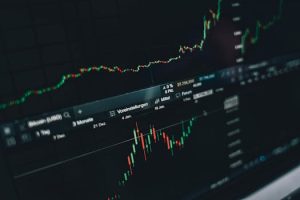Predictive Analytics: Forecasting Trends Before They Happen
In today’s rapidly evolving business landscape, it’s more important than ever to stay ahead of the curve. That’s where predictive analytics comes in. By leveraging data, algorithms, and machine learning techniques, predictive analytics allows businesses to forecast trends and make informed decisions before they even happen. In this article, we’ll explore the concept of predictive analytics and how it can be used to forecast trends before they happen, giving businesses a competitive edge in their industry.
The Rise of Predictive Analytics
The concept of predictive analytics has been around for decades, but its adoption has skyrocketed in recent years due to advances in technology and the ever-expanding amount of data available. With the rise of the internet and social media, businesses have access to an unprecedented amount of customer data, making it possible to analyze and predict consumer behavior.
However, it’s not just customer data that businesses can use. Predictive analytics can also be applied to operational data, such as sales figures, inventory levels, and weather patterns, to forecast future trends and make more accurate business decisions.
The Process of Predictive Analytics
So, how does predictive analytics work? The process typically involves three main stages: data collection, data analysis, and predictive modeling.
Data Collection
The first step in predictive analytics is to gather relevant data from various sources. This can include customer data, sales data, social media data, and more. The key is to collect as much data as possible to get a comprehensive picture of the current state of the business.
Data Analysis
Once the data is collected, it needs to be cleaned and organized for analysis. This involves identifying any missing or incorrect data and making necessary corrections. Data analysis techniques, such as statistical analysis and data mining, are then used to identify patterns and correlations in the data.
Predictive Modeling
The final step is to build predictive models based on the data analysis. There are various modeling techniques, but they all aim to use historical data to make predictions about future trends. These models are continuously refined and improved as new data becomes available, making them more accurate over time.
The Benefits of Forecasting Trends
So, why should businesses invest in predictive analytics? There are several benefits to forecasting trends before they happen.
Strategic Planning
Predictive analytics can provide valuable insights into future market trends, allowing businesses to develop data-driven strategies that align with their goals. By anticipating customer needs and preferences, businesses can tailor their products and services to meet demand, giving them a competitive advantage.
Risk Management
Predictive analytics can also help businesses identify and mitigate potential risks. By identifying patterns in historical data, businesses can anticipate potential threats and take proactive measures to avoid or minimize their impact.
Improved Decision-Making
With the help of predictive analytics, businesses can make more informed decisions based on data rather than gut feelings or assumptions. This leads to better outcomes and reduces the chances of making costly mistakes.
The Future of Predictive Analytics
The potential of predictive analytics is immense, and its role in business decisions is only going to grow in the future. As technology continues to advance, and more data becomes available, predictive analytics will become even more accurate and efficient.
Furthermore, with the rise of artificial intelligence and machine learning, predictive analytics can automate the entire process, making it faster and more scalable. This will enable businesses to make real-time predictions and act on them immediately, giving them a significant competitive advantage.
Conclusion
Predictive analytics is revolutionizing the way businesses operate by providing insights to forecast trends before they happen. By leveraging data and technology, businesses can make better decisions, improve their strategic planning, and manage risks more effectively. As the technology continues to evolve, the potential of predictive analytics will only continue to grow, making it an essential tool for businesses in the years to come.




